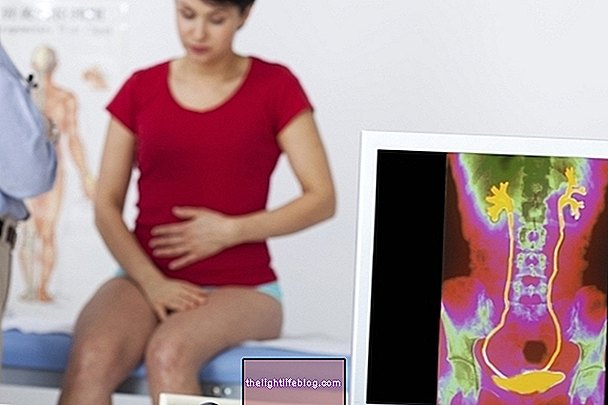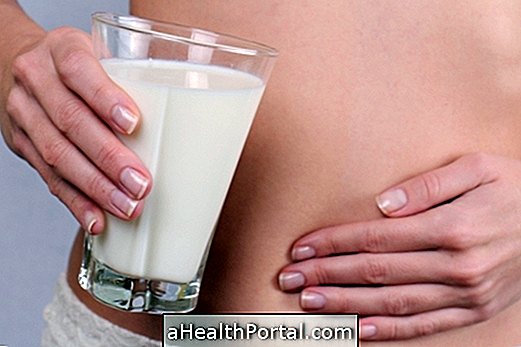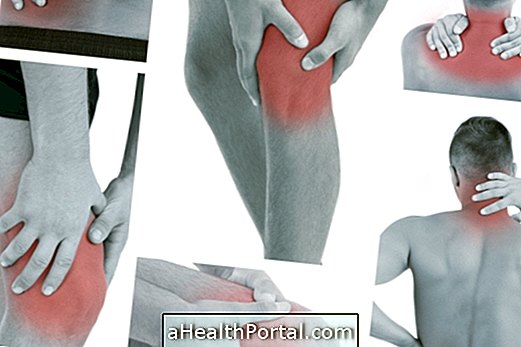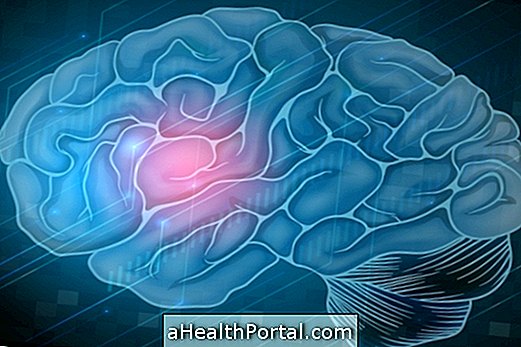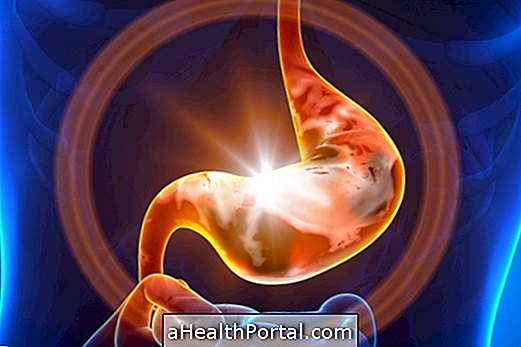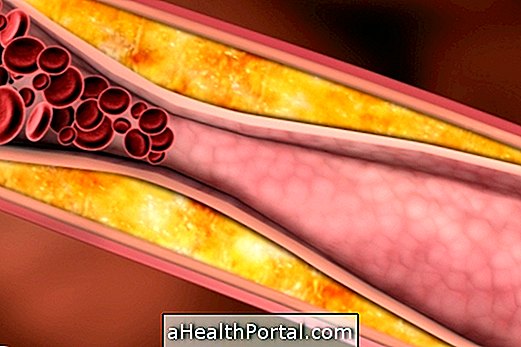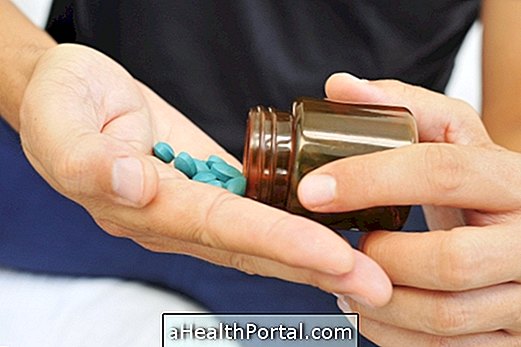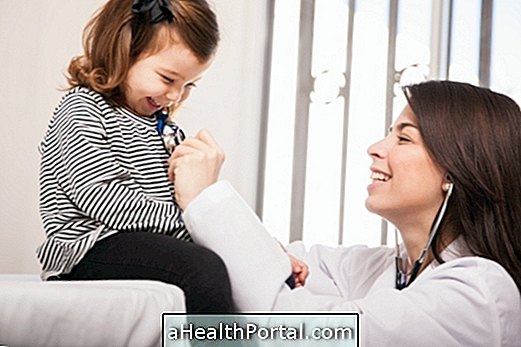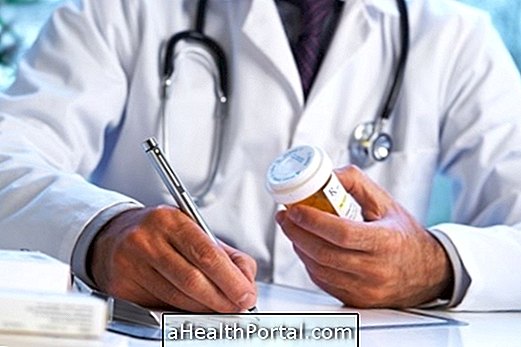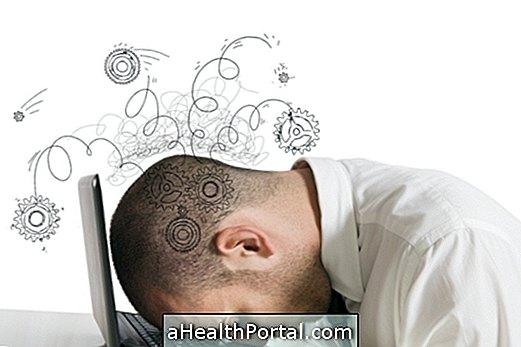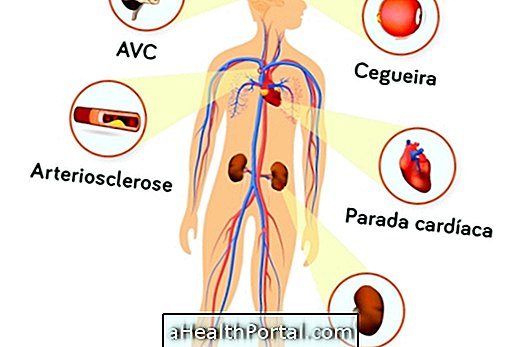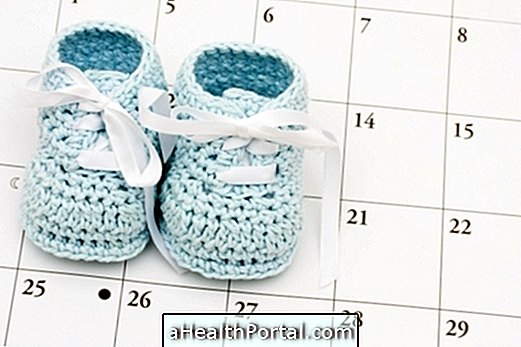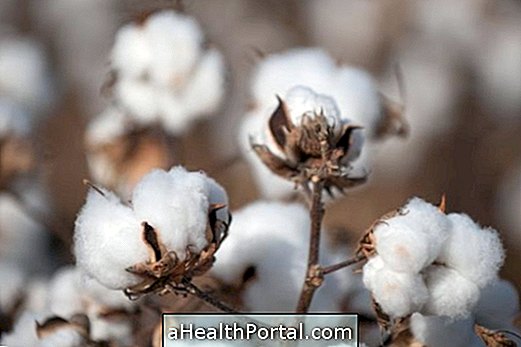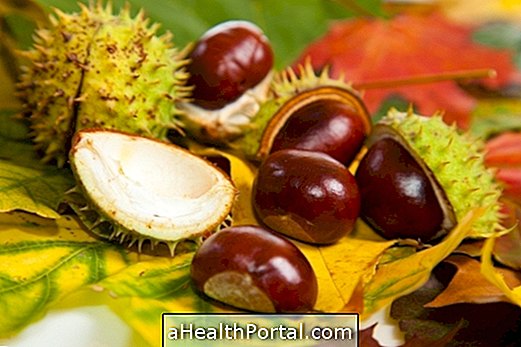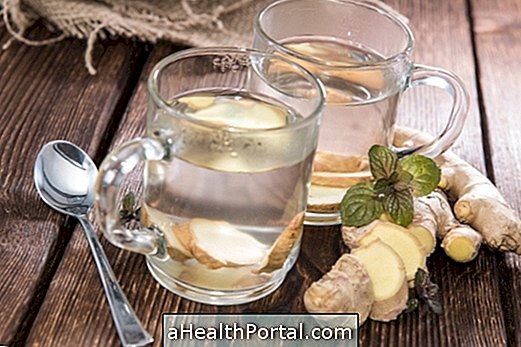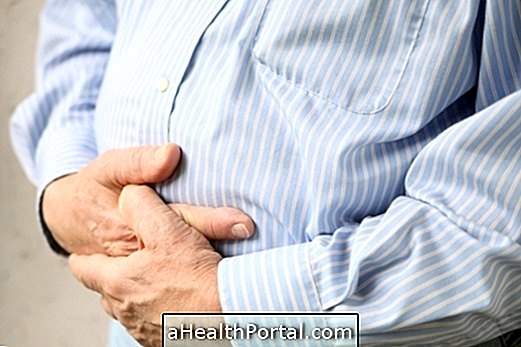The swollen belly and abdominal pain in the form of stitches can be symptoms of intestinal gas that can appear after eating foods that form more gases like cauliflower and meat in excess, for example. These can be eliminated through burping, when present in the stomach, or through the anus when present in the intestine.
In addition to eating, other causes of gas include, constipation and swallowing air when eating or talking, for example.

Symptoms of stomach gas
Signs and symptoms that may indicate gas in your stomach may include:
- Gastric discomfort;
- Frequent seizures;
- Tall stomach;
- Loss of appetite;
- Feeling of weight in the stomach;
- There may be heartburn;
- There may be shortness of breath;
- There may be a hooking in the chest, as if the heart is affected.
It is possible to decrease the gas in the stomach avoiding chewing gum and eating slowly and avoid talking during the meal so as not to get air in the digestive tract during feeding.
Symptoms of intestinal gas
Signs and symptoms that may indicate the presence of intestinal gas are usually:
- Severe abdominal pain, sometimes pinched;
- Abdominal swelling;
- Hard belly;
- Flatulence;
- Constipation;
- Intestinal colic.
These symptoms may vary in intensity according to the sensitivity of the individual and with the amount of gases present in the digestive system.
How to End Gas
Some forms of home treatments to eliminate the gases are:
- Take a cup of fennel tea to eliminate excess gases;
- Take a 30- to 40-minute walk;
- Eat a balanced diet, eating fiber-rich foods daily and drinking plenty of water;
- Avoid soft drinks and other fizzy drinks;
- Avoid excess carbohydrate foods such as pasta, lasagne and fondue;
- Avoid excess milk and its by-products and also meat dishes prepared with milk as a stro-ox, for example;
Avoid foods that cause gas, see some examples by clicking here.
Watch the video below for more practical tips on how to eliminate the gases:

